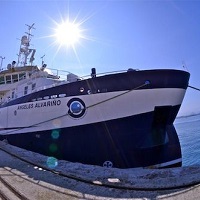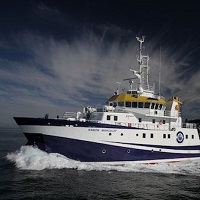Keyword
Phytoplankton taxonomic biomass in water bodies
53 record(s)
Type of resources
Categories
Topics
INSPIRE themes
Keywords
Contact for the resource
Provided by
Years
Formats
Status
-

Long term time series monitoring in 3 standard sections: Santander, Gijón and Cudillero to study the hydrographical and biological variability and tendencies in the water masses, the timing of any pronounced shift observed on them as well as the search of their causes and their biogeochemical consequences.
-

The fertilization of phytoplankton by the Iberian upwelling is responsible for the production of ∼250,000 t year-1 of blue mussels in the Galician Rías. This amount represents 95% of the Spanish and 50% of the European production, respectively. This production is jeopardized every year by species from the genera Dinophysis and Pseudo-nitzschia, responsible for lengthy shellfish harvesting closures due to accumulation of diarrhetic (DSP) and amnesic (ASP) shellfish poisoning toxins, respectively, above regulatory levels. Previous studies in this region and others in Europe indicate that these species frequently aggregate forming “thin layers”. Less than five meters thick and up to several km in horizontal extension, these layers have important implications for the management of molluscan shellfish safety. Despite this, the frequency of occurrence of thin phytoplankton layers in the Galician Rías, and the role of mixing conditions in their formation and persistence remains unknown. This project combines field observations in the Galician Rías, time series analysis, and empirical and numerical modeling with the aim of 1) investigating the role of mixing on resource availability and phytoplankton bloom initiation, maintenance and dissipation, 2) describing the frequency and spatial distribution of thin layers of phytoplankton (TLP), and 3) investigating the mechanisms responsible for the formation of TLP.
-

The objective of the project RADIALES, started in 1990, aims at “understanding and modelling the response of the marine ecosystem to the sources of temporal variability in oceanographic and planktonic components, focusing on those factors and processes affecting biological production and potentially altering the ecosystem services”. This project is the oldest multidisciplinary ocean observation initiative still active in Spain.
-

Long term time series monitoring in 3 standard sections: Santander, Gijón and Cudillero to study the hydrographical and biological variability and tendencies in the water masses, the timing of any pronounced shift observed on them as well as the search of their causes and their biogeochemical consequences. AGL buoy sensors calibrations. The cruise included the servicing of a mooring located north of Peñas Cape. Previous deployment was made on May 2015. The line was provided with three single-point current-meters and a 75 kHz ADCP. New recovery is expected by October-November.
-

ASIMUTH - Applied Simulations and Integrated Modelling for the Understanding of Toxic and Harmful Algal Blooms. The objective is develop prediction methods to be able to predict and warn about the grown of toxic and harmful algal blooms, particulary Dinophysis acuminata.
-

The objective of the project RADIALES, started in 1990, aims at “understanding and modelling the response of the marine ecosystem to the sources of temporal variability in oceanographic and planktonic components, focusing on those factors and processes affecting biological production and potentially altering the ecosystem services”. This project is the oldest multidisciplinary ocean observation initiative still active in Spain.
-

The objective of the project RADIALES, started in 1990, aims at “understanding and modelling the response of the marine ecosystem to the sources of temporal variability in oceanographic and planktonic components, focusing on those factors and processes affecting biological production and potentially altering the ecosystem services”. This project is the oldest multidisciplinary ocean observation initiative still active in Spain.
-

The objective of the project RADIALES, started in 1990, aims at “understanding and modelling the response of the marine ecosystem to the sources of temporal variability in oceanographic and planktonic components, focusing on those factors and processes affecting biological production and potentially altering the ecosystem services”. This project is the oldest multidisciplinary ocean observation initiative still active in Spain.
-

The objective of the project RADIALES, started in 1990, aims at “understanding and modelling the response of the marine ecosystem to the sources of temporal variability in oceanographic and planktonic components, focusing on those factors and processes affecting biological production and potentially altering the ecosystem services”. This project is the oldest multidisciplinary ocean observation initiative still active in Spain.
-

The objective of the project RADIALES, started in 1990, aims at “understanding and modelling the response of the marine ecosystem to the sources of temporal variability in oceanographic and planktonic components, focusing on those factors and processes affecting biological production and potentially altering the ecosystem services”. This project is the oldest multidisciplinary ocean observation initiative still active in Spain.
 Catálogo de datos del IEO
Catálogo de datos del IEO